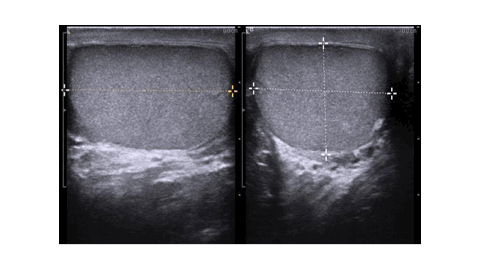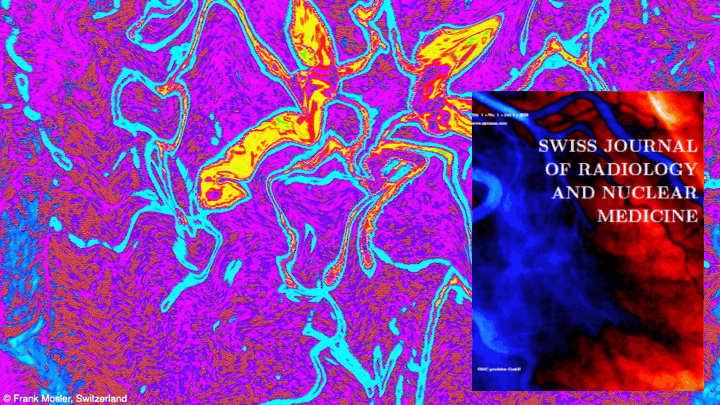The Sonographic Evaluation of Male Testicular Volume amongst Patients with Fertility Challenges
A Cross-Sectional Retrospective Study
DOI:
https://doi.org/10.59667/sjoranm.v21i1.18Keywords:
Infertility, Asthenozoospermia, Azoospermia, Oligospermia, Varicocele, Enugu, NigeriaAbstract
Background
Male infertility is a significant health issue affecting approximately 15% of couples worldwide. Testicular volume has been suggested as a potential predictor of fertility issues in men, but no study has correlated testicular volume amongst men with infertility challenges in our environment. The purpose of the study is to evaluate the relationship between testicular volume and male fertility profile in subjects with fertility challenges.
Methods
The research involves a cross-sectional retrospective analysis of records of male patients that presented to the teaching hospital with fertility concerns. Records containing age, Ultrasound measurement of testicular volume, sperm count, and sperm motility were taken into account. Sample size used was 50 records of male patients that presented with infertility. Independent samples t-test and Pearson correlation were employed at a 5% level of significance.
Results
Our results suggest that patients with lower testicular volume may have compromised sperm production and quality, thus contributing to infertility. There was a significant difference between the testicular volume of infertile males and fertile males [RT. Volume (p = <.0001) & LT. Volume (p < .0001)]. Findings in correlating testicular volume with sperm parameters shows there was a significant relationship between sperm mortility sluggish and left testicular volume (r = .301, p = .034) and between sperm count and left testicular volume (r = .317, p = .025). For sperm mortility activeness (r = .092, p = .532) and sperm mortility deadness (r = .031, p = .828), there was no significant relationship.
Discussion
The result from the analysis showed there was a positive significant difference in the values of the testicular volumes of infertile and fertile male patients with the testicular volume for infertile males lesser than the normative volume for fertile males
Conclusion
This study showed that the mean testicular volume in male with fertility challenges are lesser. Smaller testicular volume was associated more with lesser sperm mortility sluggishness and reduced sperm count. This implies that clinicians could include testicular volume measurements as part of routine fertility assessments to help identify individuals at risk for infertility.
References
1) Kliesch, S. (2014). Diagnosis of male infertility: Diagnostic work-up of the infertile man. European Urology Supplements, 13(1), 73–82. https://doi.org/10.1016/j.eursup.2014.08.002
2) Lotti, F., & Maggi, M. (2015). Ultrasound of the male genital tract in relation to male reproductive health. Human Reproduction Update, 21(1), 56–83. https://doi.org/10.1093/humupd/dmu042
3) Mohammed Abd Erahman, M. A. (2021). Testicular size and male infertility in Sudanese patients attending Khartoum Dermatology and Venereology Teaching Hospital. Scholars International Journal of Anatomy and Physiology, 4(3), 27–31. https://doi.org/10.36348/sijap.2021.v04i03.002
4) Sakamoto, H., Ogawa, Y., & Yoshida, H. (2008). Relationship between testicular volume and varicocele in patients with infertility. Urology, 71(1), 104–109. https://doi.org/10.1016/j.urology.2007.08.019
5) Carkaci, S., Ozkan, E., Lane, D., & Yang, W. T. (2010). Scrotal sonography revisited. Journal of Clinical Ultrasound, 38(1), 21–37. https://doi.org/10.1002/jcu.20642
6) Sakamoto, H., Yajima, T., Nagata, M., Okumura, T., & Suzuki, K. (2008). Relationship between testicular size by ultrasonography and testicular function: Measurement of testicular length, width, and depth in patients with infertility. International Journal of Urology, 15(6), 529–533. https://doi.org/10.1111/j.1442-2042.2008.02071.x
7) Murgia, F., Corda, V., Serrenti, M., Usai, V., Santoru, M. L., Hurt, K. J., & Atzori, L. (2020). Seminal fluid metabolomic markers of oligozoospermic infertility in humans. Metabolites, 10(2), Article 64. https://doi.org/10.3390/metabo10020064
8) Abu, S., Kolade-Yunusa, H. O., Atim, T., Obakeye, F. E., & Dakum, N. K. (2021). Correlation between ultrasonic testicular volume and seminal fluid analysis in men with infertility. European Journal of Medical and Health Sciences, 3(1), 103–107. https://doi.org/10.24018/ejmed.2021.3.1.541
9) Kiser, K., Meheissen, M. A. M., Mohamed, A. S. R., Kamal, M., Ng, S. P., Elhalawani, H., et al. (2019). Prospective quantitative quality assurance and deformation estimation of MRI-CT image registration in simulation of head and neck radiotherapy patients. Clinical and Translational Radiation Oncology, 18, 120–127. https://doi.org/10.1016/j.ctro.2019.04.018
10) Manuel, B., Ugboma, E., & Nwankwo, N. (2017). Relationship between testicular volume and sperm count in infertile men in Southern Nigeria. Asian Journal of Medicine and Health, 4(1), 1–6. https://doi.org/10.9734/ajmah/2017/29182
11) Tijani, K. H., Oyende, B. O., Awosanya, G. O., Ojewola, R. W., & Yusuf, A. O. (2014). Assessment of testicular volume: A comparison of fertile and sub-fertile West African men. African Journal of Urology, 20(3), 136–140. https://doi.org/10.1016/j.afju.2014.05.001
12) Van Batavia, J. P., Lawton, E., Frazier, J. R., Zderic, S. A., Zaontz, M. R., Shukla, A. R., et al. (2021). Total motile sperm count in adolescent boys with varicocele is associated with hormone levels and total testicular volume. Journal of Urology, 205(4), 888–894. https://doi.org/10.1097/JU.0000000000001405

Downloads
Published
Data Availability Statement
All data generated or analyzed during this study are available from the corresponding author upon reasonable request. The datasets supporting the conclusions of this article have been securely archived and can be accessed for further assessment, subject to ethical and legal considerations. This work has been published in the Swiss Journal of Radiology and Nuclear Medicine.
Issue
Section
License
Copyright (c) 2025 Augusta Amarachi Ezenwaka, Onyebuchi Okechukwu Ezema, Chizoba Ihedioha, Uchechukwu Innocent Nwadike

This work is licensed under a Creative Commons Attribution 4.0 International License.
This license requires that reusers give credit to the creator. It allows reusers to distribute, remix, adapt, and build upon the material in any medium or format, even for commercial purposes.








